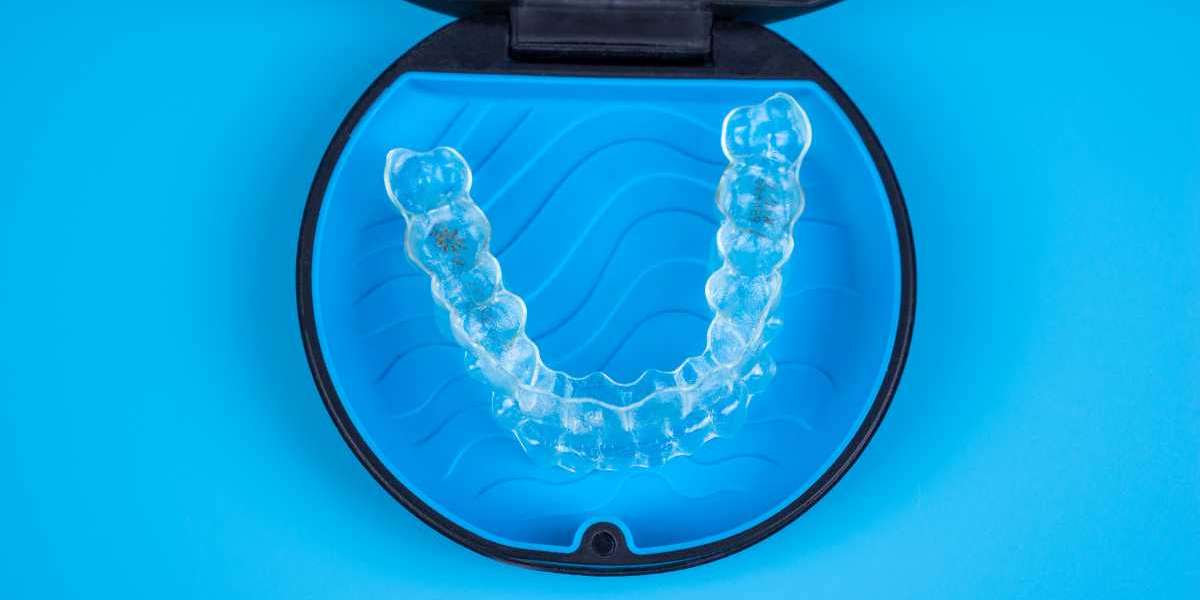In place of traditional orthodontic treatment, which involves unsightly metal brackets and wires, a new technology called clear aligners moves your teeth into place like magic. All signs point to it being a hoax. However, millions of people love these see-through trays because of the science that goes into making them. It's a sophisticated, calculated procedure.
We'll break down the mechanics of clear aligners, explain how they work, and reveal why they might be the best option for your smile. If you're considering orthodontic treatment, this information could help you make an informed decision.
How Do Clear Aligners Move Teeth?
The small, consistent pressure used by clear aligners shifts the teeth into position, as opposed to the metal brackets and wires utilized by traditional braces. I don't see how this works, though.
1. Controlled Force Over Time
Each set of aligners is meant to reposition your teeth a fraction of a millimeter at a time. The pressure gradually adjusts your teeth into the desired place.
2. Aligner Plastic and Biomechanics
Made from a specialized medical-grade plastic, clear aligners are engineered to be both strong and flexible. They apply pressure at precise points, directing teeth into new positions in small increments.
3. Cellular Changes in the Bone
When pressure is applied to teeth, the bone surrounding them begins to break down and rebuild itself. This is called bone remodeling, a natural biological response that allows teeth to move.
Why Do Teeth Move When Wearing Aligners?
Your teeth aren't locked in place. They're held by the periodontal ligament, a soft tissue structure that allows slight movement. When clear aligners apply pressure, the ligament stretches on one side and compresses on the other. This signals bone cells to break down on one side and rebuild on the opposite side, allowing the tooth to shift gradually.
Are Clear Aligners as Effective as Braces?
1. The Strength of Constant Pressure
Braces work through continuous force applied by wires, whereas aligners apply pressure differently. However, the effectiveness of clear aligners depends on wearing them for the recommended 20-22 hours per day.
2. Cases That Aligners Can Treat
If your misalignment, gaps, or bite is mild to moderate, you may find great success with clear aligners. Conventional braces may still be necessary for cases of severe orthodontic issues.
3. The Role of Compliance
Unlike braces, clear aligners are removable. This is both an advantage and a responsibility—skipping wear time can slow down progress.
The Science of Material: What Are Clear Aligners Made Of?
Clear aligners are crafted from a thermoplastic material, usually BPA-free, and designed for comfort. The material needs to be strong enough to exert force but flexible enough for easy removal.
1. Smart Track Technology
Some brands, like Invisalign, use patented materials that improve how aligners fit and move teeth.
2. Heat-Activated for Better Fit
Some aligners adjust slightly with body heat, ensuring a snug, effective fit.
How Often Do You Change Clear Aligners?
After one or two weeks of wearing the aligners, you move on to the next set. The process repeats itself until all of the teeth have shifted into their permanent placements.
1. Why So Many Sets?
Teeth can only move a certain distance at a time without causing harm. By changing aligners gradually, the process remains safe and predictable.
2. Tracking Progress with Digital Scans
Advanced scanning technology allows orthodontists to create precise treatment plans. Some systems even use AI to predict tooth movement with high accuracy.
The Role of 3D Printing in Clear Aligners
Modern orthodontics has embraced digital advancements. Aligners are designed using 3D scanning and printing technology, ensuring a custom fit for every patient.
1. Digital Impressions Over Molds
Gone are the days of messy molds—modern technology uses digital scans to capture a detailed model of your teeth.
2. Precision Manufacturing
Once scanned, advanced software maps out your entire treatment plan, and 3D printers create custom aligners to match each stage.
How Long Does Clear Aligner Treatment Take?
How long it takes in total is proportional to how complicated your case is. Depending on the severity of the case, it can take anything from six months to two years to finish.
1. Factors That Affect Treatment Time
- The severity of misalignment
- Patient compliance
- Bone density and biological response
- Use of additional attachments
2. Post-Treatment Retainers
After treatment, retainers help maintain your new smile. Without them, teeth may shift back over time.
Who Is a Good Candidate for Clear Aligners?
While clear aligners work for many, they aren't the right fit for everyone.
1. Best Candidates
- Those with mild to moderate crowding
- Patients with minor bite issues
- Individuals committed to wearing aligners consistently
2. Who Might Need Braces Instead?
- Severe misalignment
- Cases requiring major bite corrections
- Those unable to wear aligners for long hours
Clear Aligners and Oral Health Benefits
Beyond straightening teeth, aligners offer other benefits:
1. Easier Cleaning
Unlike braces, aligners can be removed, allowing proper brushing and flossing.
2. Reduced Risk of Cavities and Gum Disease
Since food doesn't get trapped like it does with braces, there's a lower risk of plaque buildup.
3. Improved Speech and Confidence
Straighter teeth can enhance speech clarity and boost self-esteem.
Are Clear Aligners Worth It?
For many, the benefits of clear aligners outweigh the drawbacks. They provide an effective, discreet way to achieve a straighter smile without the discomfort of metal braces. If you're considering treatment, consult a trusted orthodontist to see if clear aligners are the right fit for you.
For those in Geneva, Smile Design Boutique offers expert consultations and advanced clear aligner treatments tailored to individual needs.
FAQs
1. How long does clear aligner treatment take?
How long it takes to complete treatment is conditional on how complicated your case is. Treatment times might range from six to eight months for mild instances to two years or more for severe ones.
2. Do clear aligners hurt?
Most patients feel mild discomfort during the first few days of wearing a new set, but this fades quickly. It's a sign that your teeth are moving.
3. Can I eat with clear aligners on?
No, clear aligners should be removed before eating to prevent damage. Always brush your teeth before putting them back on.
4. What happens if I don't wear my aligners enough?
Wearing aligners for less than 20-22 hours a day can slow down your progress, leading to extended treatment time.
5. Are clear aligners noticeable?
Clear aligners are nearly invisible, making them a discreet option for straightening teeth. Most people won't even notice you're wearing them.














